
Amphastar Pharmaceuticals Inc
NASDAQ:AMPH


| US |

|
Fubotv Inc
NYSE:FUBO
|
Media
|
| US |

|
Bank of America Corp
NYSE:BAC
|
Banking
|
| US |

|
Palantir Technologies Inc
NYSE:PLTR
|
Technology
|
| US |
C
|
C3.ai Inc
NYSE:AI
|
Technology
|
| US |

|
Uber Technologies Inc
NYSE:UBER
|
Road & Rail
|
| CN |

|
NIO Inc
NYSE:NIO
|
Automobiles
|
| US |

|
Fluor Corp
NYSE:FLR
|
Construction
|
| US |

|
Jacobs Engineering Group Inc
NYSE:J
|
Professional Services
|
| US |

|
TopBuild Corp
NYSE:BLD
|
Consumer products
|
| US |

|
Abbott Laboratories
NYSE:ABT
|
Health Care
|
| US |

|
Chevron Corp
NYSE:CVX
|
Energy
|
| US |
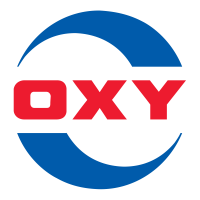
|
Occidental Petroleum Corp
NYSE:OXY
|
Energy
|
| US |
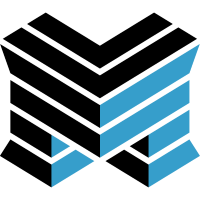
|
Matrix Service Co
NASDAQ:MTRX
|
Construction
|
| US |
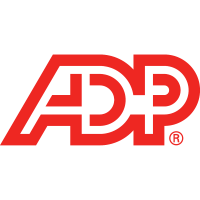
|
Automatic Data Processing Inc
NASDAQ:ADP
|
Technology
|
| US |
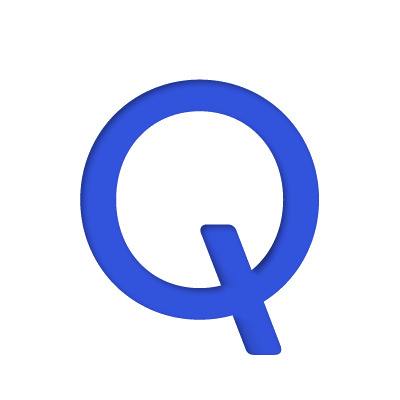
|
Qualcomm Inc
NASDAQ:QCOM
|
Semiconductors
|
| US |

|
Ambarella Inc
NASDAQ:AMBA
|
Semiconductors
|
Utilize notes to systematically review your investment decisions. By reflecting on past outcomes, you can discern effective strategies and identify those that underperformed. This continuous feedback loop enables you to adapt and refine your approach, optimizing for future success.
Each note serves as a learning point, offering insights into your decision-making processes. Over time, you'll accumulate a personalized database of knowledge, enhancing your ability to make informed decisions quickly and effectively.
With a comprehensive record of your investment history at your fingertips, you can compare current opportunities against past experiences. This not only bolsters your confidence but also ensures that each decision is grounded in a well-documented rationale.
Do you really want to delete this note?
This action cannot be undone.

| 52 Week Range |
36.99
63.45
|
| Price Target |
|
We'll email you a reminder when the closing price reaches USD.
Choose the stock you wish to monitor with a price alert.

|
Fubotv Inc
NYSE:FUBO
|
US |

|
Bank of America Corp
NYSE:BAC
|
US |

|
Palantir Technologies Inc
NYSE:PLTR
|
US |
|
C
|
C3.ai Inc
NYSE:AI
|
US |

|
Uber Technologies Inc
NYSE:UBER
|
US |

|
NIO Inc
NYSE:NIO
|
CN |

|
Fluor Corp
NYSE:FLR
|
US |

|
Jacobs Engineering Group Inc
NYSE:J
|
US |

|
TopBuild Corp
NYSE:BLD
|
US |

|
Abbott Laboratories
NYSE:ABT
|
US |

|
Chevron Corp
NYSE:CVX
|
US |

|
Occidental Petroleum Corp
NYSE:OXY
|
US |

|
Matrix Service Co
NASDAQ:MTRX
|
US |

|
Automatic Data Processing Inc
NASDAQ:ADP
|
US |

|
Qualcomm Inc
NASDAQ:QCOM
|
US |

|
Ambarella Inc
NASDAQ:AMBA
|
US |
This alert will be permanently deleted.
 Amphastar Pharmaceuticals Inc
Amphastar Pharmaceuticals Inc



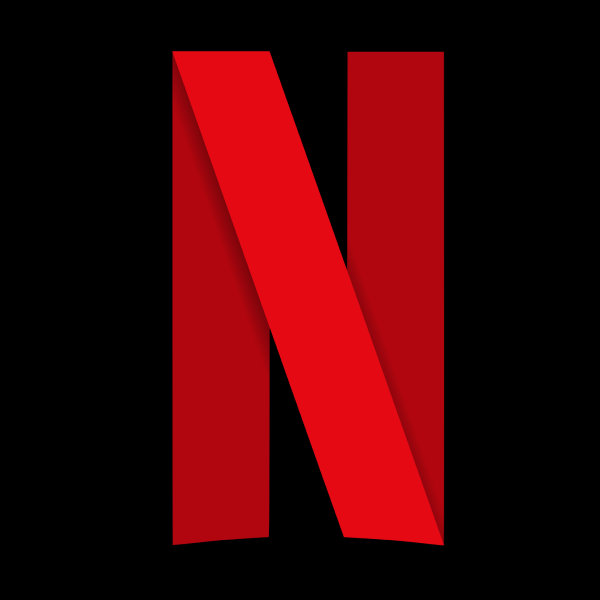

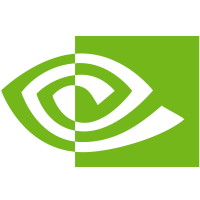
 You don't have any saved screeners yet
You don't have any saved screeners yet

Greetings, and welcome to the Amphastar Pharmaceuticals, Inc. Third Quarter Earnings Call. [Operator Instructions] Please note that certain statements made during this call regarding matters that are not historical facts, including, but not limited to, management's outlook or predictions for future periods are forward-looking statements. These statements are based solely on information that is now available to us. We encourage you to review the section entitled Forward-Looking Statements in the press release issued today and the presentation on the company's website.
Also, please refer to our SEC filings, which can be found on our website and the SEC's website for a discussion of numerous factors that may impact our future performance. We will also discuss certain non-GAAP measures. Important information on our use of these measures and reconciliation to U.S. GAAP may be found in our earnings release. Please note, this conference call is being recorded.
Our speakers today are Mr. Bill Peters, CFO; Mr. Dan Dischner, Senior Vice President of Corporate Communications; and Mr. Tony Marrs, EVP of Regulatory Affairs and Clinical Operations.
I will now turn the conference over to your host, Mr. Dan Dischner, Senior Vice President of Corporate Communications. Dan, you may begin.
Thank you, Ziko. Good afternoon, and thanks for joining us for our third quarter's earnings call of 2024.
Today, I'm joined by Bill Peters, our CFO and Executive Vice President of Finance; and Tony Marrs, Executive Vice President of Regulatory Affairs and Clinical Operations.
In the third quarter of 2024, Amphastar reported net revenues of $191.2 million, marking a 6% increase year-over-year, reflecting the resilience and growing strength of our diversified product portfolio and the strategic initiatives. Despite facing challenges such as the impact of Hurricane Helene, which impacted our logistics and resulted in delays -- in delayed shipments, the core business of Amphastar remains robust, leading the path to end this year with a solid footing for the execution of our portfolio. Our strategic initiatives regarding our regulatory filings and commercial portfolio execution remain on track, and we are well positioned to continue the growth of our key revenue drivers with BAQSIMI, Primatene MIST, and our core hospital and clinical use products in the critical care arena.
A key highlight for the quarter was Primatene MIST, which achieved its highest quarterly sales since the launch, reaching $26 million in sales. This performance is a significant step toward our goal of $100 million in annual sales for this product by the end of 2024. We believe there are additional growth opportunities with Primatene MIST. And therefore, in 2025, we will expand our current physician sampling program by initiating a pilot sales program targeting more primary care physicians. The transition for BAQSIMI is progressing smoothly with sales performance meeting expectations. BAQSIMI remains an essential part of our portfolio, and we are dedicated to expanding this market's presence.
To enhance the brand's visibility in the United States, we plan to strengthen the sales force for BAQSIMI. This product exemplifies the kind of innovative, user-friendly solutions we strive to develop and serve as a benchmark for our impactful products we are committed to advancing through our pipeline. As anticipated, competition in the glucagon injection kit market has intensified, leading to a 9% decline in sales from the previous year, seeing $26.7 million in sales for the third quarter. We believe the increased competition reflects the rising awareness of effective hypoglycemia management options and the attractiveness to the market. On a different note, we are pleased to announce the launch of our albuterol MDI product occurring in the third quarter of 2024, marking a significant expansion of our respiratory portfolio and operations in our Armstrong facility.
This launch positions us to meet the growing demand for affordable, high-quality asthma management options, entering a competitive market, we continue to actively pursue business opportunities. On a regulatory front, we have continued routine productive discussions with the FDA regarding AMP-002 and believe that a clear path forward for approval is near. The generic teriparatide ANDA, AMP-015, we received the CRL for this filing, and we are on track to submit our response by the end of this year.
Turning to our diabetes portfolio. We are scheduled to refile our BLA for our first insulin product, AMP-004 or Insulin Aspart in the fourth quarter of this year. For our GLP-1 ANDA, AMP-018, which was filed in the second quarter of 2024, we are pleased to announce that this filing was granted competitive generic therapeutic designation and priority review. As mentioned on our last call, this product remains on track for a GDUFA goal date in the second quarter of 2025.
Regarding AMP-007, our second inhalation ANDA, as previously announced, has experienced an extension in the GDUFA goal date to the second quarter of 2025, and there are currently no pending items with the agency regarding this application. On a separate note, we are proud to announce or introduce AMP-028, a new biosimilar addition to our pipeline. This product has IQVIA sales of plus $2 billion with no current biosimilars. We believe our unique capabilities will limit the potential number of competitors in the market, and it marks our first BLA target outside of insulin. Additionally, it highlights the strategic transition towards more advanced therapeutic areas where we can maximize value and impact. This shift represents a deliberate move to focus our efforts on high-value projects that have the potential to drive sustainable growth and utilize our in-house expertise and resources.
As we close 2024 and look towards 2025, our focus remains on advancing our portfolio through proprietary filings in high-value areas like biosimilars, positioning us for sustainable growth and reduced competitive pressures. In the coming year, we plan to announce additional candidates in our proprietary and biosimilar pipelines, aligning with our strategic direction. Our R&D expertise and self-funded investments continue to drive progress, while strong sales from BAQSIMI and Primatene MIST provide a solid foundation. We're confident in the potential of our upcoming projects, including AMP-002, teriparatide, AMP-007 and our first GLP-1 ANDA. With a clear strategy and an expanding pipeline, we are excited about the opportunities ahead and remain committed to delivering long-term value.
With that, I'd like to turn the call to our CFO and Executive Vice President of Finance, Bill Peters, to discuss the second quarter's financial results.
Thank you, Dan. Revenues for the third quarter increased 6% to $191.2 million from $180.6 million in the previous year's period. BAQSIMI sales through Amphastar totaled $40.4 million in the third quarter. Sales of BAQSIMI by Eli Lilly totaled $6.4 million during the same period, and we recorded a net economic benefit in our other revenues line of $2.4 million, net of their expenses of $4 million. Our product sales have increased while the net economic benefit has decreased throughout the year as we have taken over distribution responsibilities for BAQSIMI in various countries around the world. We will assume distribution of BAQSIMI in the remaining territories on a country-by-country basis through the end of this year.
During the quarter, while this distribution transition was ongoing, we faced a temporary supply disruption in 14 European countries and ran out of Lilly labeled BAQSIMI before we were able to receive any Amphastar labeled product. This temporary disruption limited European sales of BAQSIMI by approximately $2 million to $3 million. Glucagon sales decreased 9% to $26.8 million from $29.5 million due to a decrease in units shipped as more hypoglycemia patients moved to ready-to-use products such as BAQSIMI. Primatene MIST sales grew to a new record of $26.1 million in the third quarter compared to $24.8 million in the third quarter of last year, which represented sales growth of 5%.
Epinephrine sales increased 6% to $21.3 million from $20.2 million, primarily due to an increase in units of our prefilled syringe product as we entered the Canadian market this quarter. Phytonadione sales increased 57% to $11.7 million from $7.4 million due to an increase in demand this quarter. Enoxaparin and naloxone sales decreased primarily due to a decrease in unit volumes. Other finished pharmaceutical product sales decreased $2.2 million to $35.5 million from $37.7 million on lower sales of products such as atropine and calcium chloride. These decreases were partially offset by higher unit volumes of sodium bicarbonate due to an increase in capacity at our International Medication subsidiary as well as the launch of our albuterol MDI in August 2024.
Overall, sales were negatively impacted by Hurricane Helene as between $2 million and $4 million in sales that were expected in the third quarter were not recognized due to delayed deliveries. Revenues for these shipments are expected to be recognized in the fourth quarter. Cost of revenues increased to $89.3 million from $79.2 million. Gross margins declined to 53% of revenues from 60% in the prior year, primarily because BAQSIMI sales in the prior year were made by Lilly and were booked net of cost of goods, which contributed to higher gross margins in the previous year. This year, most sales are made by Amphastar, which books the cost of goods. Additionally, we had an increase in labor costs and certain component costs.
Selling, distribution and marketing expenses increased 40% to $9 million from $6.4 million in the previous year due to our BAQSIMI sales force expansion. General and administrative spending increased 17% to $14.8 million from $12.7 million, primarily due to increased expenses related to BAQSIMI and the personnel. Research and development expenditures increased 26% to $21.1 million from $16.7 million due to increases in material expenses related to our insulin pipeline products. Our nonoperating expense of $9.4 million compared to an operating expense of $9 million in the third quarter of last year. Net income decreased by 18% to $40.4 million or $0.78 per share in the third quarter from $49.2 million or $0.91 per share in the third quarter of 2023.
Adjusted net income decreased to $49.6 million or $0.96 per share compared to an adjusted net income of $61.9 million or $1.15 per share in the third quarter of last year. Adjusted earnings excludes amortization, equity compensation, impairments of long-lived assets and onetime events. In the third quarter, we had cash flow from operations of approximately $60 million. We used $35 million of this cash to repurchase 797,000 shares. We also announced today that our Board has authorized an additional buyback program of $50 million.
I will now turn the call back over to Dan.
Thanks, Bill, for the update. With that, we will now take your questions. Ziko, please open the line for Q&A.
[Operator Instructions] The first question comes from Ekaterina Knyazkova with JPMorgan.
So just 2 questions, if I may. So first, just on BAQSIMI, you've had the asset for several quarters now. Just any surprises in terms of where you're seeing uptake or the competitive dynamics you're seeing in the market? And I guess, any updates as you're thinking about peak sales potential for that product? And then second question is just on the GLP-1 category. Can you just talk a little bit about the role that the company can play in this category over time? You obviously have AMP-018 potentially coming in 2025, but more as we think about some of the bigger GLP-1 molecules eventually going generic. Just any color there would be appreciated.
So as far as BAQSIMI, right now, it's going relatively smoothly other than what I mentioned in my comments, which was the slight disruption that we had in supply going to Europe this quarter. So we were expecting to get all of the BAQSIMI with Amphastar labeled product out to those countries in time before the Lilly labeled product ran out. But unfortunately, that didn't happen, which left us short in 14 countries. So we were unable to deliver anywhere between 4 weeks to 6 weeks for a lot of those countries.
So that's unfortunate, but these things happen when you're transitioning from -- to a new product and a new distribution center. So no real big surprises. And as far as peak sales, I'll say no. Right now, we're still on target for what we had said previously on peak sales, which was $250 million to $275 million in peak sales. So right now, we're -- our annual sales are trending, we believe, really close to the, I'll say, our base case that we put in at that time.
And then on the GLP-1 strategy, that's a great question. As you know, that it's getting to be a really crowded market. There's a lot of people coming up with new GLP-1 type products. We're not alone in thinking about it. It's probably a little too early to really discuss any potential things in that group for us right now. But we'll update people as we get closer.
Yes. Maybe we'll have an update for you at your conference in January.
Yes.
The next question comes from David Amsellem with Piper Sandler.
David, you there?
David, may we request you to unmute your line from your side, please? David, may we request that you unmute your line, please?
I think he's gone. So let's go on to the next one.
Yes.
The next question comes from Pavan Patel from Bank of America.
First, on epinephrine, can you speak to the main driver of lower revenue in the quarter? Was it more the BPI vial competition or Pfizer supply shortage that may start becoming resolved? And where should we look in other areas of the business to offset this moving forward? Will it be competitor supply shortages and other products? Or is the focus going to be on driving BAQSIMI growth such that the fluctuations of base business are smoother? And then the second question is on BAQSIMI, maybe the year-over-year decline relative to what Lilly booked in prior year. What's driving the competitive headwinds there? Is it other branded products or generic glucagon? And can you frame what the investment in sales force will look like and timing of onboarding those sales reps?
Sure. So Epi, I think you're comparing to second quarter. So we did have a decrease in the multi-dose vial as there's been 2 competitors that have launched multi-dose vial this year, driving prices and some of our volumes down. However, that was partially offset this quarter and year-over-year increase in epinephrine sales as we began shipping the prefilled syringes to Canada this quarter. As far as the BAQSIMI, the year-over-year decline, I wouldn't say it's related to any competitive issues. It's partially driven by what I mentioned earlier, which was we were out of stock for several weeks in 14 countries in Europe, so that's limited sales there. And what I had mentioned earlier this year, which is the pricing that we have in the U.S. has a decline this year because of the increased fees that we have to pay to wholesalers. So we had said that for the year that you should expect sales would be up single -- or up high single digits in terms of units, but down low single digits in pricing.
And if we look at it on a year-long basis, I think you get to something that's closer to what we said. So I think this one quarter is more of an aberration than anything else. So as far as the investment goes, that -- we have had a very small increase in our sales force in the third quarter of this year, but we're planning a larger sales force increase beginning in January, but there'll be some expenses related to that, that will hit in the fourth quarter as well. And once again, that sales force will also be an outsourced one. And so we haven't -- we might be able to disclose a little bit more about that later, but this is a new initiative that we're just starting right now.
And we've always said that by utilizing or outsourcing the sales force, it gave us some flexibility to expand if we identified opportunities where we thought it would make sense. And so it allows us to keep more control over the sales force. So yes, we're excited about this opportunity of increasing that footprint.
The next question is from David Amsellem with Piper Sandler.
Sorry about that. So a couple of questions. First, can you talk about the albuterol generic, the albuterol HFA? And what kind of footprint sales-wise, do you envision for that as we move through '25? So that's number one. Number two, I know I asked this a lot, but AMP-002, just anything new there or any latest thoughts on the road ahead for that product? And then lastly, I don't know if you addressed this, I apologize if you did, on AMP-007, I know the GDUFA got extended out to the second quarter. But just wondering out loud, anything there that you can talk about that gives you confidence that you're going to get that across the finish line? And then given that there are a couple of entrants in that market, how do you think about the opportunity for that product?
I'll start with the albuterol, the sales footprint. That is -- we had said earlier that we thought it'd be a little bit of a slow start as we ramp up and we also had some capacity issues as we're bringing on new capacity to that facility. So that should time up well. So we do expect this to be a meaningful product for the company in 2025, but not in the fourth quarter. So hopefully, that's helpful for you. We haven't given specific sales guidance. And the reason is that when you launch a new generic into an existing generic market, you're not there at market formation, we like to not disrupt the market too much and to try to take that market share effort slowly. So I think that's what we're trying to do with that.
Yes. And I'll take for AMP-002, we continue to have the high-level meetings with FDA officials, and they've been encouraging, and I know it's kind of the repetitive statements that I make about it, but we feel more encouraged. We suspect that in the near future, we should be receiving some sort of action to move the application along. But the good news is that we continue to be engaged with the agency in this dialogue. And I think soon we should see some things shake free on that. For AMP-007, this is our first cycle.
And the agency has simply provided a late cycle IR. And as a result of it, they've extended the action date. There's nothing in there that gives us any alarm. We talked to many of our colleagues, and it seems that this is a pattern that the agency has been taking a lot lately. But again, it would be our first cycle on this combination product. So nothing alarming to us on the conversations that we've had with them. So we're still optimistic as we usually are for a first cycle.
And actually, if I may just sneak in a follow-up. I think I asserted that there might be entrants in that market for AMP-007, actually might have been mistaken there. But can you say if there already is competition? And then secondly, when you say combination product, does that mean that it's a -- would you mean just drug device combo or you mean actual like 2 compounds like an Advair, for instance? Any color you can share there would be helpful.
I'll take the combination product question. So it's just a device drug combination like the majority of our inhalation products.
And as far as competition, we haven't really said about -- said competition or not on that one. So we'd like to not answer that one at this time.
[Operator Instructions]
Ziko, let's wrap it up.
As there are no further questions, I would now like to hand the conference over to Dan Dischner for closing comments.
Thank you, everyone, for joining us today. We remain confident in delivering on our pipeline while executing on BAQSIMI and Primatene MIST. We look forward to updating you all again next quarter, and have a great day.
Thank you. This concludes today's teleconference. You may disconnect your lines at this time. Thank you for your participation.